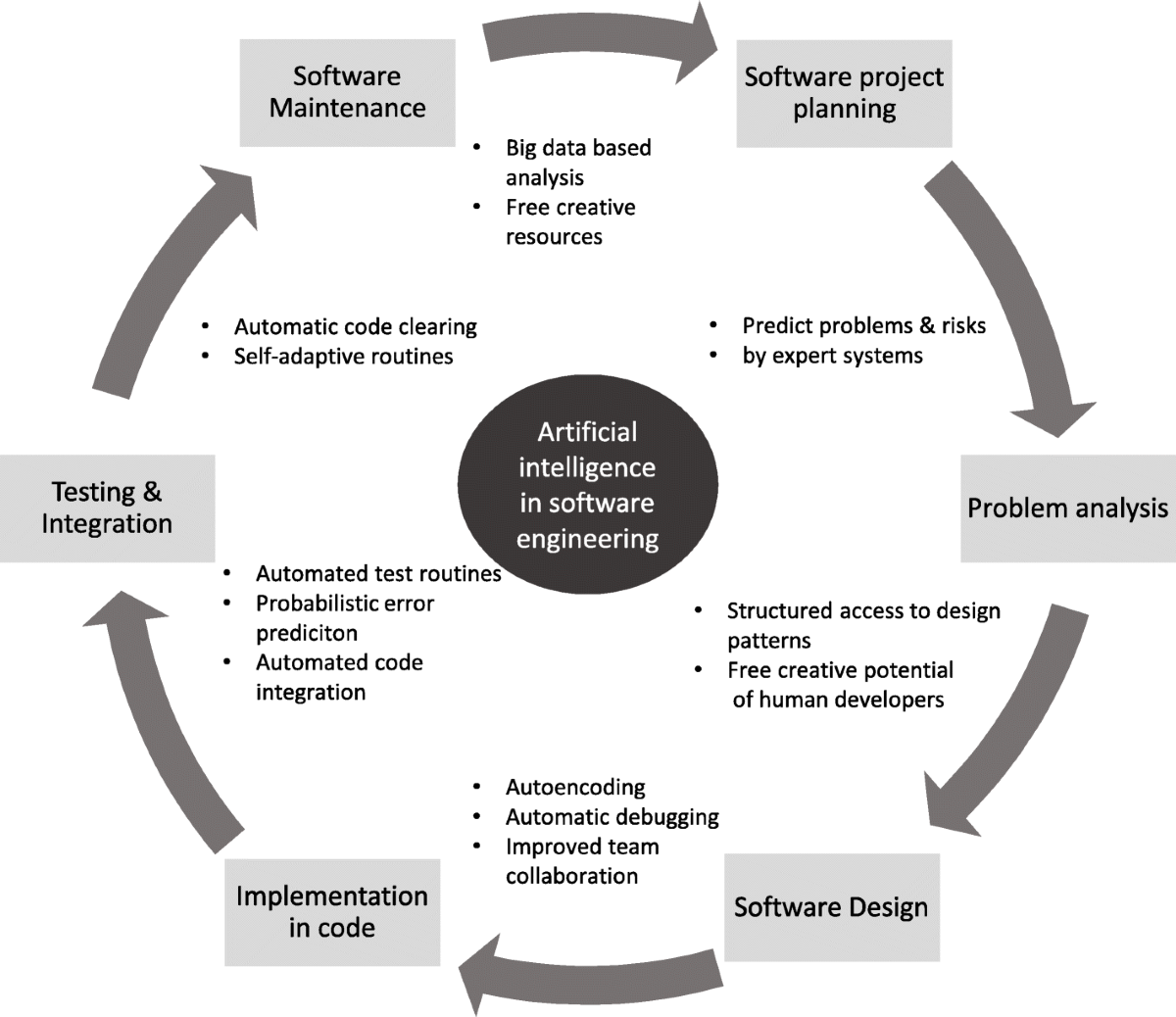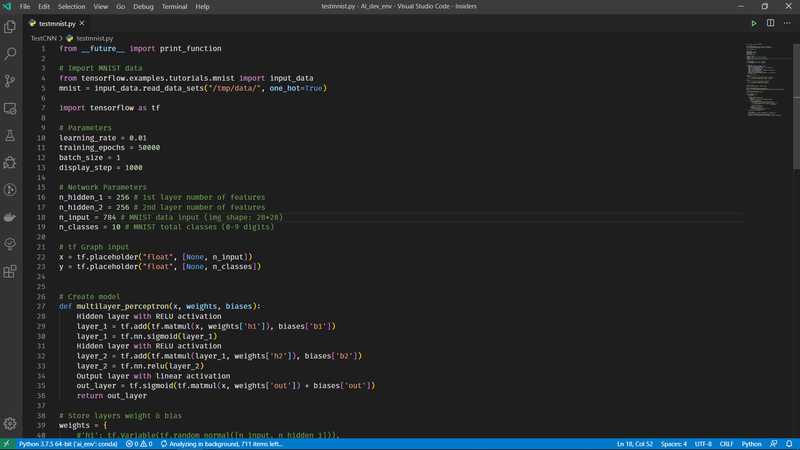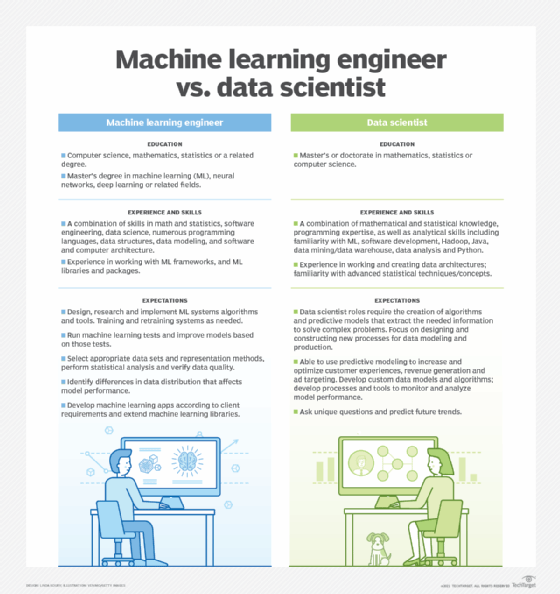All Categories
Featured
Table of Contents
- – The 8-Second Trick For Generative Ai Training
- – All About Fundamentals To Become A Machine Lea...
- – Get This Report about Aws Machine Learning En...
- – Indicators on Machine Learning Engineer Cours...
- – Top Machine Learning Courses Online - Questions
- – Facts About Machine Learning In A Nutshell F...
- – Practical Deep Learning For Coders - Fast.ai...
Some individuals think that that's dishonesty. If someone else did it, I'm going to use what that person did. I'm compeling myself to think via the possible solutions.
Dig a little bit deeper in the mathematics at the beginning, just so I can build that structure. Santiago: Finally, lesson number 7. I do not think that you have to understand the nuts and screws of every algorithm prior to you use it.
I would have to go and inspect back to really obtain a far better instinct. That does not indicate that I can not solve points using neural networks? It goes back to our arranging instance I think that's simply bullshit recommendations.
As a designer, I've functioned on several, lots of systems and I've made use of lots of, several points that I do not understand the nuts and screws of exactly how it works, despite the fact that I comprehend the impact that they have. That's the last lesson on that particular string. Alexey: The amusing point is when I consider all these collections like Scikit-Learn the algorithms they use inside to carry out, for instance, logistic regression or another thing, are not the like the algorithms we examine in artificial intelligence classes.
The 8-Second Trick For Generative Ai Training
Also if we tried to learn to get all these fundamentals of device understanding, at the end, the algorithms that these libraries make use of are various. Santiago: Yeah, absolutely. I assume we need a lot extra pragmatism in the market.

By the means, there are two different paths. I generally talk to those that intend to work in the market that intend to have their impact there. There is a path for researchers and that is entirely various. I do not risk to mention that since I do not recognize.
Right there outside, in the industry, materialism goes a lengthy method for certain. (32:13) Alexey: We had a comment that stated "Really feels even more like inspirational speech than chatting about transitioning." Maybe we must switch over. (32:40) Santiago: There you go, yeah. (32:48) Alexey: It is a good inspirational speech.
All About Fundamentals To Become A Machine Learning Engineer
Among the important things I intended to ask you. I am taking a note to discuss becoming much better at coding. However initially, let's cover a couple of things. (32:50) Alexey: Allow's begin with core tools and frameworks that you require to find out to really transition. Allow's say I am a software program designer.
I understand Java. I recognize SQL. I recognize just how to make use of Git. I know Bash. Possibly I understand Docker. All these things. And I listen to about artificial intelligence, it appears like a trendy point. So, what are the core tools and structures? Yes, I enjoyed this video clip and I obtain encouraged that I do not need to get deep right into mathematics.
Santiago: Yeah, absolutely. I assume, number one, you must start discovering a little bit of Python. Because you already recognize Java, I don't assume it's going to be a substantial transition for you.
Not since Python coincides as Java, yet in a week, you're gon na obtain a lot of the distinctions there. You're gon na have the ability to make some progress. That's number one. (33:47) Santiago: Then you obtain specific core tools that are mosting likely to be made use of throughout your whole job.
Get This Report about Aws Machine Learning Engineer Nanodegree
You obtain SciKit Learn for the collection of device knowing formulas. Those are devices that you're going to have to be using. I do not suggest simply going and discovering concerning them out of the blue.
We can discuss details courses later. Take among those training courses that are going to start introducing you to some troubles and to some core concepts of artificial intelligence. Santiago: There is a course in Kaggle which is an intro. I don't bear in mind the name, however if you go to Kaggle, they have tutorials there for complimentary.
What's good concerning it is that the only requirement for you is to recognize Python. They're going to offer an issue and inform you just how to make use of decision trees to solve that particular trouble. I believe that process is exceptionally powerful, since you go from no machine finding out background, to recognizing what the issue is and why you can not address it with what you recognize today, which is straight software application engineering techniques.
Indicators on Machine Learning Engineer Course You Need To Know
On the various other hand, ML designers focus on structure and deploying artificial intelligence versions. They concentrate on training designs with information to make predictions or automate jobs. While there is overlap, AI engineers manage more varied AI applications, while ML engineers have a narrower focus on artificial intelligence algorithms and their sensible implementation.

Machine discovering designers concentrate on creating and releasing device knowing designs into manufacturing systems. They work with design, making certain designs are scalable, reliable, and incorporated right into applications. On the various other hand, information scientists have a broader duty that includes information collection, cleaning, exploration, and structure versions. They are frequently in charge of extracting insights and making data-driven decisions.
As companies progressively adopt AI and device discovering modern technologies, the need for skilled professionals expands. Device knowing engineers function on cutting-edge jobs, contribute to advancement, and have affordable salaries.
ML is basically various from traditional software program advancement as it concentrates on training computer systems to discover from data, instead than programs specific regulations that are implemented systematically. Uncertainty of end results: You are possibly utilized to creating code with predictable results, whether your feature runs as soon as or a thousand times. In ML, however, the results are much less particular.

Pre-training and fine-tuning: Just how these designs are trained on substantial datasets and then fine-tuned for specific jobs. Applications of LLMs: Such as message generation, view analysis and details search and retrieval. Documents like "Focus is All You Need" by Vaswani et al., which introduced transformers. On-line tutorials and courses concentrating on NLP and transformers, such as the Hugging Face program on transformers.
Top Machine Learning Courses Online - Questions
The ability to manage codebases, combine changes, and deal with disputes is simply as crucial in ML growth as it remains in conventional software application jobs. The skills developed in debugging and screening software program applications are extremely transferable. While the context could change from debugging application reasoning to determining issues in data processing or version training the underlying concepts of organized examination, hypothesis testing, and iterative improvement coincide.
Maker understanding, at its core, is greatly reliant on data and likelihood concept. These are important for recognizing just how formulas learn from information, make forecasts, and assess their efficiency.
For those interested in LLMs, a thorough understanding of deep learning designs is beneficial. This includes not just the technicians of semantic networks yet likewise the architecture of particular versions for various use instances, like CNNs (Convolutional Neural Networks) for photo handling and RNNs (Recurring Neural Networks) and transformers for consecutive data and natural language handling.
You must understand these concerns and find out methods for determining, minimizing, and interacting regarding bias in ML versions. This includes the possible effect of automated choices and the ethical ramifications. Lots of designs, particularly LLMs, require substantial computational resources that are frequently offered by cloud platforms like AWS, Google Cloud, and Azure.
Building these abilities will certainly not just facilitate a successful transition right into ML but likewise ensure that programmers can add effectively and properly to the development of this vibrant area. Theory is vital, yet nothing defeats hands-on experience. Begin servicing jobs that enable you to use what you've found out in a functional context.
Join competitions: Sign up with systems like Kaggle to get involved in NLP competitions. Construct your tasks: Start with simple applications, such as a chatbot or a text summarization tool, and progressively boost complexity. The field of ML and LLMs is swiftly advancing, with brand-new breakthroughs and technologies arising frequently. Remaining updated with the newest study and trends is critical.
Facts About Machine Learning In A Nutshell For Software Engineers Uncovered
Sign up with neighborhoods and online forums, such as Reddit's r/MachineLearning or neighborhood Slack networks, to go over concepts and get advice. Participate in workshops, meetups, and conferences to connect with various other specialists in the area. Contribute to open-source tasks or write post regarding your discovering journey and projects. As you get competence, start looking for chances to include ML and LLMs into your job, or look for new roles concentrated on these modern technologies.

Prospective use cases in interactive software, such as referral systems and automated decision-making. Understanding unpredictability, basic analytical steps, and probability distributions. Vectors, matrices, and their function in ML algorithms. Error reduction methods and gradient descent explained just. Terms like design, dataset, functions, tags, training, reasoning, and recognition. Data collection, preprocessing methods, design training, examination procedures, and deployment considerations.
Decision Trees and Random Forests: Instinctive and interpretable models. Assistance Vector Machines: Optimum margin category. Matching trouble kinds with appropriate models. Balancing efficiency and intricacy. Basic framework of neural networks: nerve cells, layers, activation functions. Split computation and forward proliferation. Feedforward Networks, Convolutional Neural Networks (CNNs), Recurrent Neural Networks (RNNs). Photo acknowledgment, series prediction, and time-series evaluation.
Constant Integration/Continuous Deployment (CI/CD) for ML process. Design monitoring, versioning, and efficiency tracking. Identifying and resolving changes in model performance over time.
Practical Deep Learning For Coders - Fast.ai for Beginners

Course OverviewMachine knowing is the future for the next generation of software application experts. This program functions as a guide to artificial intelligence for software application engineers. You'll be introduced to 3 of the most appropriate parts of the AI/ML technique; monitored discovering, semantic networks, and deep knowing. You'll realize the differences between conventional shows and machine understanding by hands-on development in monitored discovering before developing out intricate dispersed applications with neural networks.
This program functions as a guide to device lear ... Show A lot more.
Table of Contents
- – The 8-Second Trick For Generative Ai Training
- – All About Fundamentals To Become A Machine Lea...
- – Get This Report about Aws Machine Learning En...
- – Indicators on Machine Learning Engineer Cours...
- – Top Machine Learning Courses Online - Questions
- – Facts About Machine Learning In A Nutshell F...
- – Practical Deep Learning For Coders - Fast.ai...
Latest Posts
He Ultimate Guide To Coding Interview Preparation In 2025
The Best Courses For Machine Learning Interview Preparation
How To Answer Algorithm Questions In Software Engineering Interviews
More
Latest Posts
He Ultimate Guide To Coding Interview Preparation In 2025
The Best Courses For Machine Learning Interview Preparation
How To Answer Algorithm Questions In Software Engineering Interviews